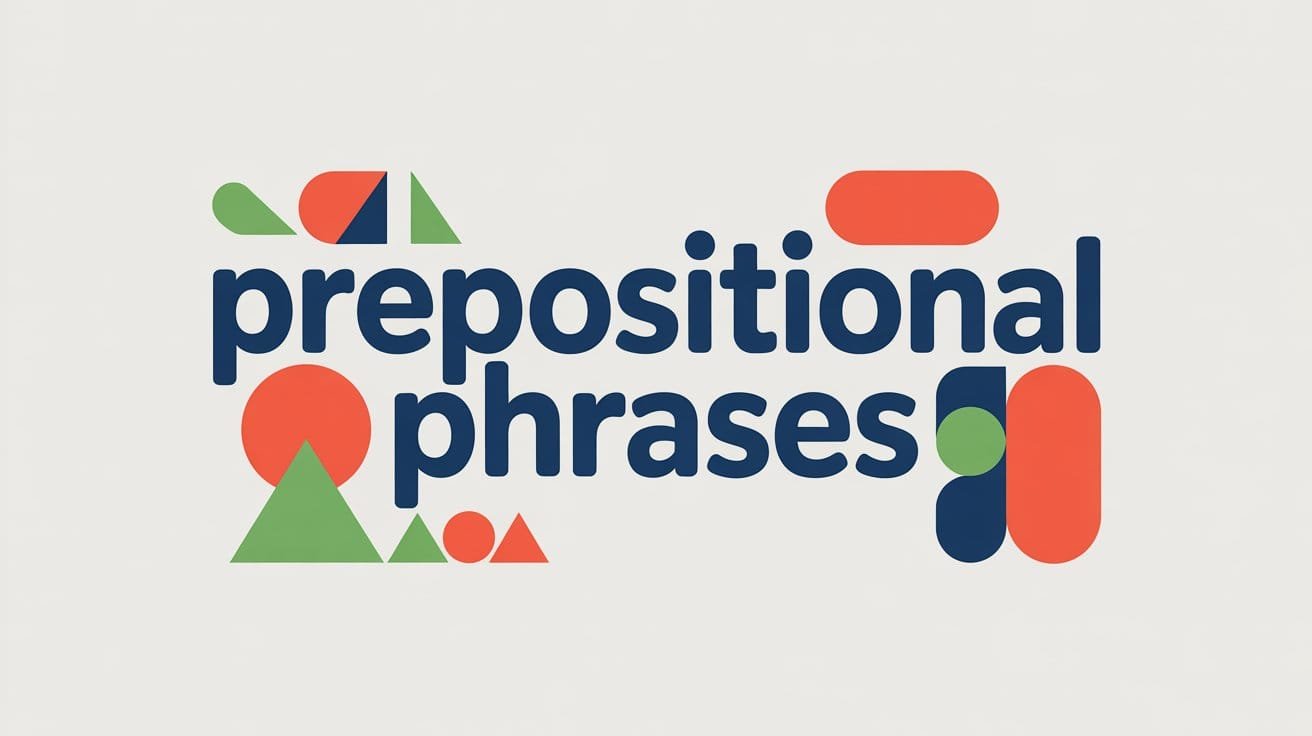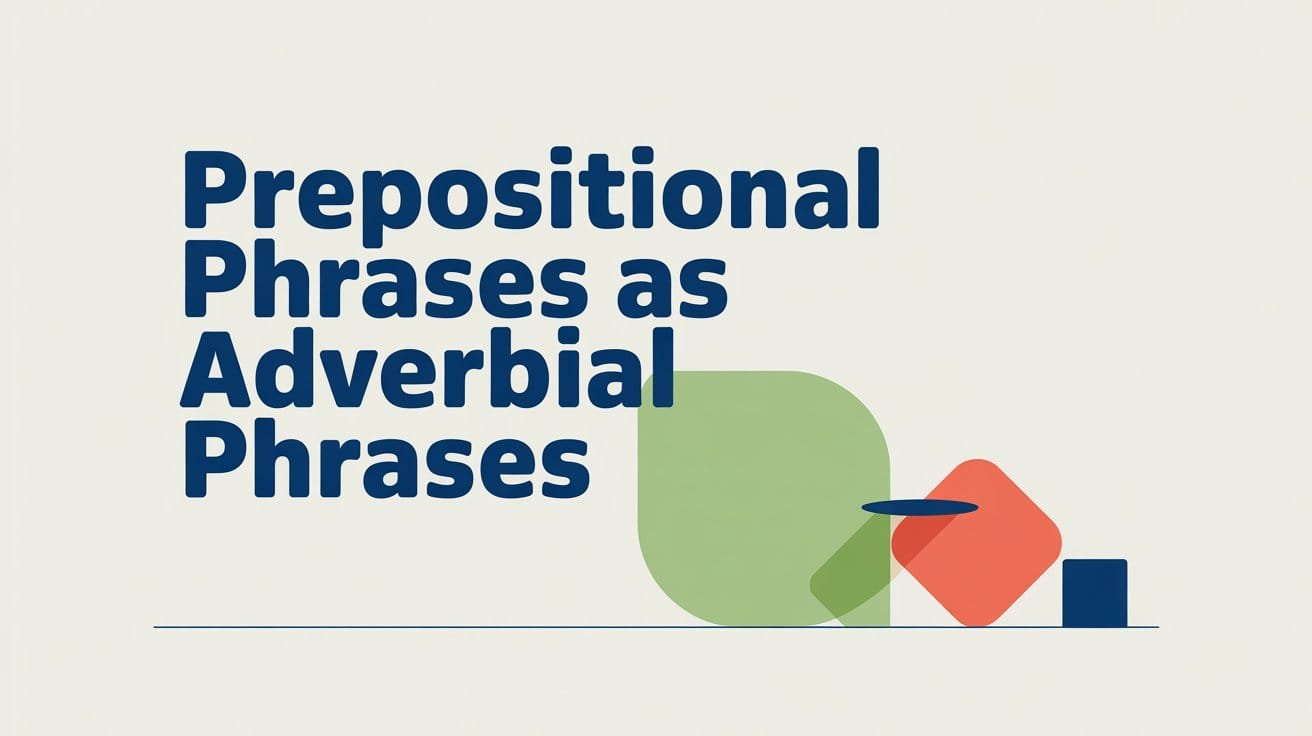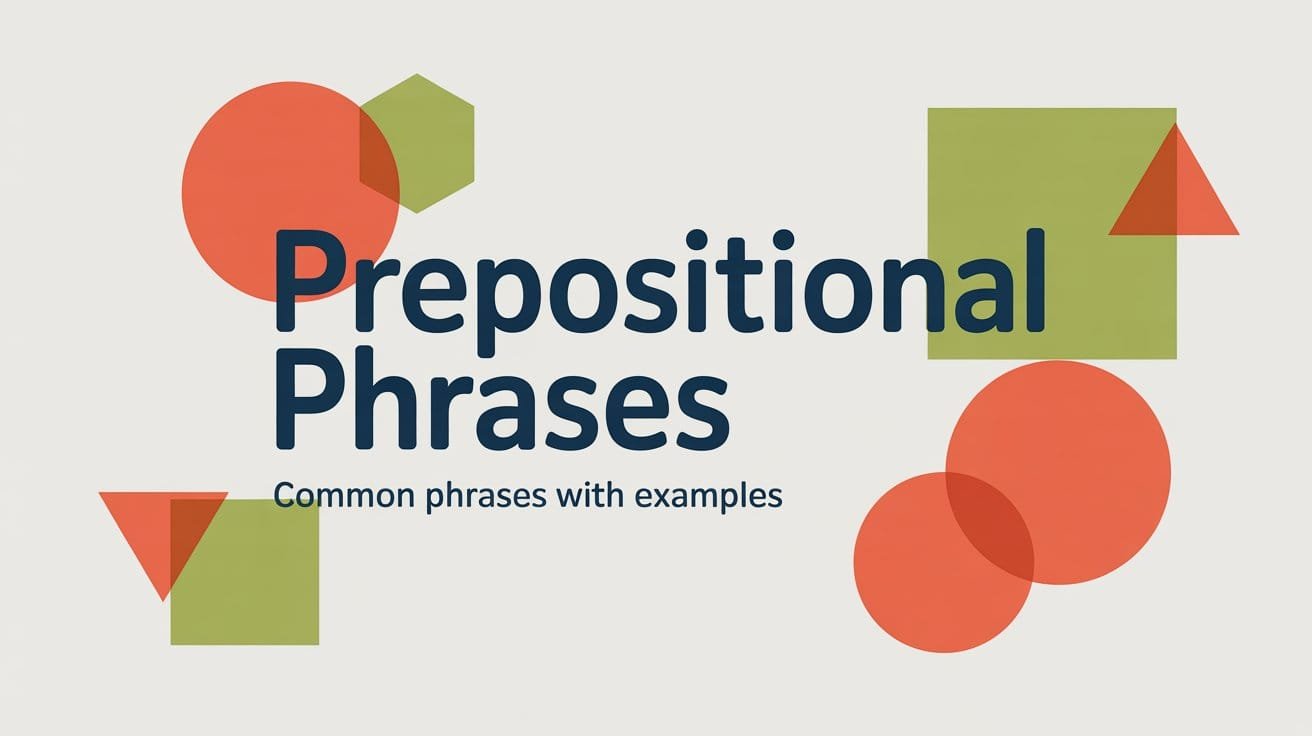A prepositional phrase is one of the most common structures in English grammar. You’ll find it in everyday writing and speech, often without realizing it. Whether you’re giving directions, describing something, or explaining when something happened, prepositional phrases help add detail and clarity.
In simple terms, a prepositional phrase begins with a preposition and ends with a noun or pronoun. It can describe location, time, direction, cause, and more. In this guide, we’ll break down how prepositional phrases work, the different types, and how to use them effectively in your writing.
What Is a Prepositional Phrase?
A prepositional phrase is a group of words that begins with a preposition and ends with its object, usually a noun, pronoun, or noun phrase. The phrase may also include modifiers that describe the object.
Prepositional phrases don’t contain the subject and main verb of a sentence, but they help give context—like where something happens, when it happens, or in what way.
Examples:
- Under the bed
- After the game
- With her closest friend
- On top of the mountain
Each example begins with a preposition (under, after, with, on top of) and ends with an object (the bed, the game, her closest friend, the mountain).
These phrases function as a single unit and can act as adjectives or adverbs, depending on their role in the sentence.
Structure of a Prepositional Phrase
A prepositional phrase follows a simple pattern:
Preposition + Modifiers (optional) + Object of the Preposition
Let’s break down each part:
Preposition
This is the word that shows the relationship between its object and another word in the sentence.
Examples: in, at, under, after, through, between
Modifiers (Optional)
These are words that describe the object, often adjectives or determiners.
Example: her old
Object of the Preposition
This is the noun, pronoun, or noun phrase that completes the phrase.
Example: bookshelf
Example Breakdown:
On her old bookshelf
→ Preposition: On
→ Modifiers: her old
→ Object: bookshelf
Another example:
After the long meeting
→ Preposition: After
→ Modifiers: the long
→ Object: meeting
Each part plays a role in building a phrase that adds clarity, detail, or direction to a sentence.
Types of Prepositional Phrases
Prepositional phrases can serve different roles in a sentence depending on what they modify. The two main types are adjectival and adverbial prepositional phrases.
Adjectival Prepositional Phrases
These phrases modify a noun or pronoun. They usually answer the question which one? or what kind?
Examples:
- The book on the top shelf is mine.
- We visited the museum near the river.
- I adopted the cat with the torn ear.
Each phrase describes a specific noun by giving more information about it.
Adverbial Prepositional Phrases
These phrases modify a verb, an adjective, or another adverb. They usually answer how, when, where, why, or to what extent.
Examples:
- She left after the meeting.
- The kids are playing in the yard.
- He responded with confidence.
These phrases provide context about the action or condition in the sentence.
Prepositional Phrases as Nouns (Less Common)
Occasionally, a prepositional phrase can act as a subject or object in a sentence. While rare, it’s grammatically valid.
Examples:
- During lunch is not a good time to call.
- Between classes is when she studies the most.
Although these function like noun phrases, they’re still considered prepositional in form.
Functions of Prepositional Phrases in Sentences
Prepositional phrases are incredibly versatile and serve various functions depending on the context. Below are five key ways they function in English sentences, each with a clear purpose and example.
Providing Location
Prepositional phrases often indicate where something is happening or located.
Examples:
- The keys are on the kitchen counter.
- She found her phone under the bed.
- There’s a café next to the library.
Indicating Time
They can also tell when something happened, happens, or will happen.
Examples:
- We’ll meet after lunch.
- The store closes at 9 p.m.
- He arrived during the meeting.
Offering Direction
Prepositional phrases help express movement or direction toward a place or object.
Examples:
- The cat jumped onto the table.
- They walked through the forest.
- She turned toward the window.
Demonstrating Possession
Some prepositional phrases show a relationship of ownership or association.
Examples:
- The cover of the book was torn.
- He’s a friend of my brother’s.
- The color of the sky changed at sunset.
Describing Manner
These phrases can describe how something is done or in what style or tone.
Examples:
- She spoke with confidence.
- They worked in silence.
- He responded with a smile.
How to Identify Prepositional Phrases
Identifying prepositional phrases becomes easier once you know what to look for. A prepositional phrase usually begins with a preposition and ends with a noun, pronoun, or noun phrase that serves as the object of the preposition. The entire group functions as one unit in the sentence.
Look for a Preposition
Common prepositions include in, on, under, over, at, with, by, after, before, between, through, and many more.
Find the Object of the Preposition
The object will be a noun or pronoun that completes the phrase. There may be modifiers between the preposition and its object.
Group the Preposition, Modifiers, and Object Together
All the words from the preposition to the end of the object (including any adjectives or determiners) form the prepositional phrase.
Examples
- In the morning
→ Preposition: in
→ Object: morning
→ Full phrase: In the morning - With her closest friend
→ Preposition: with
→ Modifiers: her closest
→ Object: friend
→ Full phrase: With her closest friend - Between the tall buildings
→ Preposition: between
→ Modifiers: the tall
→ Object: buildings
→ Full phrase: Between the tall buildings
By applying these 3 steps, you can quickly spot prepositional phrases and understand their role in a sentence.
Common Prepositions in Prepositional Phrases
Prepositions are the starting point of every prepositional phrase. They show relationships between words, often relating to time, place, direction, or manner.
Below is a list of common prepositions frequently used in prepositional phrases:
| Preposition | Description |
| In | Shows where something is |
| On | Tells us the position of something |
| Under | Describes where something is located below |
| With | Highlights who or what is accompanying |
| By | Points to the creator or the method used |
| For | Indicates the purpose or intended recipient |
| At | Specifies the place of a meeting or action |
| About | Gives the topic or subject |
| Between | Highlights the position in relation to two things |
Prepositional Phrase Examples
Prepositional phrases play different roles in a sentence depending on what they modify. Below are examples of how they function as adjectives, adverbs, and nouns, with three fresh examples for each.
Prepositional Phrases As Adjectives
Prepositional phrases that modify nouns or pronouns by answering which one? or what kind?
Examples:
- The jacket with the missing button was thrown away.
- I read the article about climate change.
- The student in the yellow hoodie asked a question.
Prepositional Phrases As Adverbs
These phrases modify verbs, adjectives, or other adverbs, often showing when, where, how, or to what extent.
Examples:
- She walked across the field without stopping.
- They studied until midnight for the exam.
- He replied with surprising calm.
Prepositional Phrases As Nouns
While less common, prepositional phrases can function as the subject or object of a sentence. In these cases, the entire phrase acts as a single noun.
Examples:
- After the final whistle is when the crowd erupted. (Subject of the sentence)
- We scheduled our call for after the client meeting. (Object of the preposition “for”)
Idiomatic Prepositional Phrases
Some prepositional phrases have idiomatic meanings that go beyond the literal meanings of the words. These are called idiomatic prepositional phrases. The meaning of the whole phrase cannot be understood by interpreting each word separately.
Example:
In the sentence “He is in trouble with his parents,” the phrase “in trouble with” doesn’t mean he is physically inside some kind of trouble. Instead, it means he has done something wrong, and his parents are upset. This kind of phrase carries a unique, non-literal meaning.
Here are a few common idiomatic prepositional phrases in English:
- Under the weather
Meaning: Feeling unwell or sick
Example: Mr. Smith won’t be able to come today; he is a bit under the weather. - On the same page
Meaning: In agreement or having a shared understanding
Example: Please ensure you are all on the same page before presenting your ideas. - In the blink of an eye
Meaning: Happening very quickly
Example: The car disappeared in the blink of an eye.
Idiomatic prepositional phrases are often used in spoken English and can make writing sound more natural and expressive.
FAQs About Prepositional Phrases
What is a prepositional phrase?
A prepositional phrase is a group of words that starts with a preposition and ends with a noun, pronoun, or noun phrase, called the object of the preposition. It often adds detail about time, place, direction, or manner.
How do you identify a prepositional phrase in a sentence?
Look for a preposition (like in, at, under, after) followed by its object. The entire group of words forms the prepositional phrase.
Example: “He sat near the window.” → near the window is the prepositional phrase.
What are some common prepositions used in English?
Some of the most commonly used prepositions include: in, on, at, by, with, under, after, between, and about.
Can a prepositional phrase function as a subject?
Yes, although it’s less common. Prepositional phrases can act as the subject of a sentence, especially in more formal or literary contexts.
Example: “After the storm was the calmest moment of the day.”
What is the difference between a preposition and a prepositional phrase?
A preposition is a single word (like at, in, under) that shows a relationship between words. A prepositional phrase includes the preposition, its object, and any modifiers, forming a unit that adds detail to a sentence.



